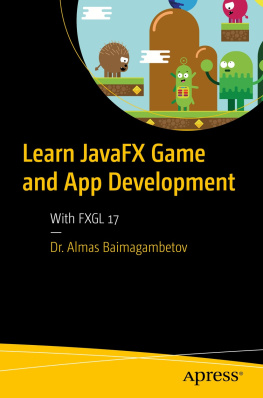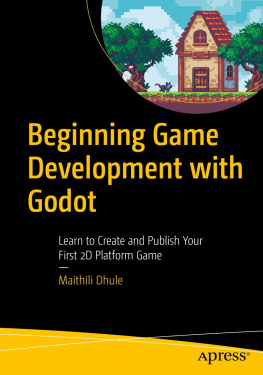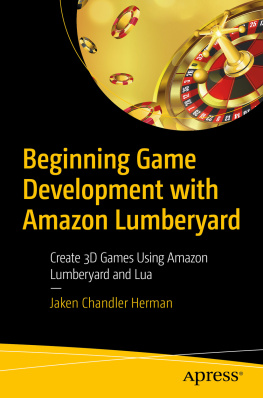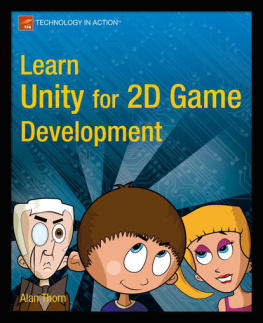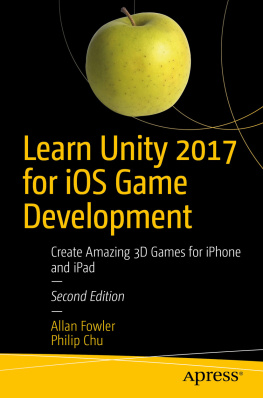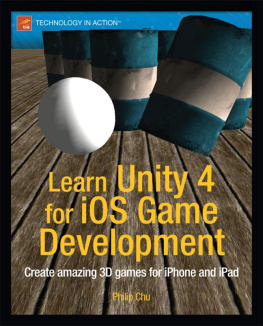Almas Baimagambetov - Learn JavaFX Game and App Development: With FXGL 17
Here you can read online Almas Baimagambetov - Learn JavaFX Game and App Development: With FXGL 17 full text of the book (entire story) in english for free. Download pdf and epub, get meaning, cover and reviews about this ebook. year: 2022, publisher: Apress, genre: Computer. Description of the work, (preface) as well as reviews are available. Best literature library LitArk.com created for fans of good reading and offers a wide selection of genres:
Romance novel
Science fiction
Adventure
Detective
Science
History
Home and family
Prose
Art
Politics
Computer
Non-fiction
Religion
Business
Children
Humor
Choose a favorite category and find really read worthwhile books. Enjoy immersion in the world of imagination, feel the emotions of the characters or learn something new for yourself, make an fascinating discovery.
- Book:Learn JavaFX Game and App Development: With FXGL 17
- Author:
- Publisher:Apress
- Genre:
- Year:2022
- Rating:5 / 5
- Favourites:Add to favourites
- Your mark:
Learn JavaFX Game and App Development: With FXGL 17: summary, description and annotation
We offer to read an annotation, description, summary or preface (depends on what the author of the book "Learn JavaFX Game and App Development: With FXGL 17" wrote himself). If you haven't found the necessary information about the book — write in the comments, we will try to find it.
We will start with an overview of the book followed by requisite concepts from Java and JavaFX that will be used throughout this book. Next, we will learn about the FXGL game engine and its wide range of real-world game development techniques. In the following chapter, we learn about entity-component model used in FXGL to create a powerful abstraction of the game world. The next chapter builds on this, where we develop a platformer game using the physics engine and a popular external tool called Tiled. An important concept of games AI is covered in the following chapter. Visually complex features related to graphics and rendering as well as UI elements and animation system in FXGL will be discussed in the next chapter. The following chapter is dedicated to non-game applications that can be developed using FXGL. The last two chapters cover packaging and deployment of JavaFX and FXGL applications and discussion on future projects.
The key take-away skill from this book is the ability to develop professional-level applications and games with FXGL. During the course of this book, you will have produced a range of cross-platform applications and games using FXGL, reinforcing the game development concepts covered throughout.
What You Will Learn Understand use of advanced Java and JavaFX concepts
Learn about real-world game development concepts in a general-purpose programming language Master professional cross-platform, desktop and mobile, games using the FXGL game engine
Who Is This Book ForThis book is for beginners in Java and/or JavaFX who wish to develop apps and games with FXGL, while improving Java and JavaFX skills.
Almas Baimagambetov: author's other books
Who wrote Learn JavaFX Game and App Development: With FXGL 17? Find out the surname, the name of the author of the book and a list of all author's works by series.

